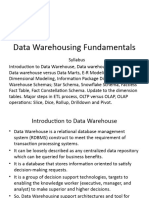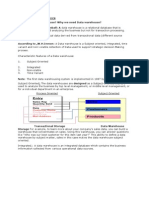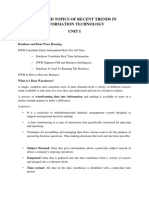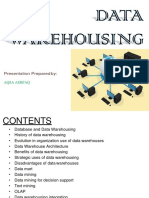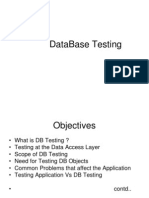0% found this document useful (0 votes)
15 views58 pagesData Warehousing Module 1
A data warehouse is a centralized system for storing and managing large volumes of data from various sources, designed to facilitate historical data analysis and informed decision-making. It integrates data from multiple operational systems, ensuring fast retrieval and improved data quality, while also supporting business intelligence tools. Despite its advantages, data warehousing can be costly and complex to set up, requiring skilled staff and ongoing maintenance.
Uploaded by
affanattari9263Copyright
© © All Rights Reserved
We take content rights seriously. If you suspect this is your content, claim it here.
Available Formats
Download as PDF, TXT or read online on Scribd
0% found this document useful (0 votes)
15 views58 pagesData Warehousing Module 1
A data warehouse is a centralized system for storing and managing large volumes of data from various sources, designed to facilitate historical data analysis and informed decision-making. It integrates data from multiple operational systems, ensuring fast retrieval and improved data quality, while also supporting business intelligence tools. Despite its advantages, data warehousing can be costly and complex to set up, requiring skilled staff and ongoing maintenance.
Uploaded by
affanattari9263Copyright
© © All Rights Reserved
We take content rights seriously. If you suspect this is your content, claim it here.
Available Formats
Download as PDF, TXT or read online on Scribd
/ 58
